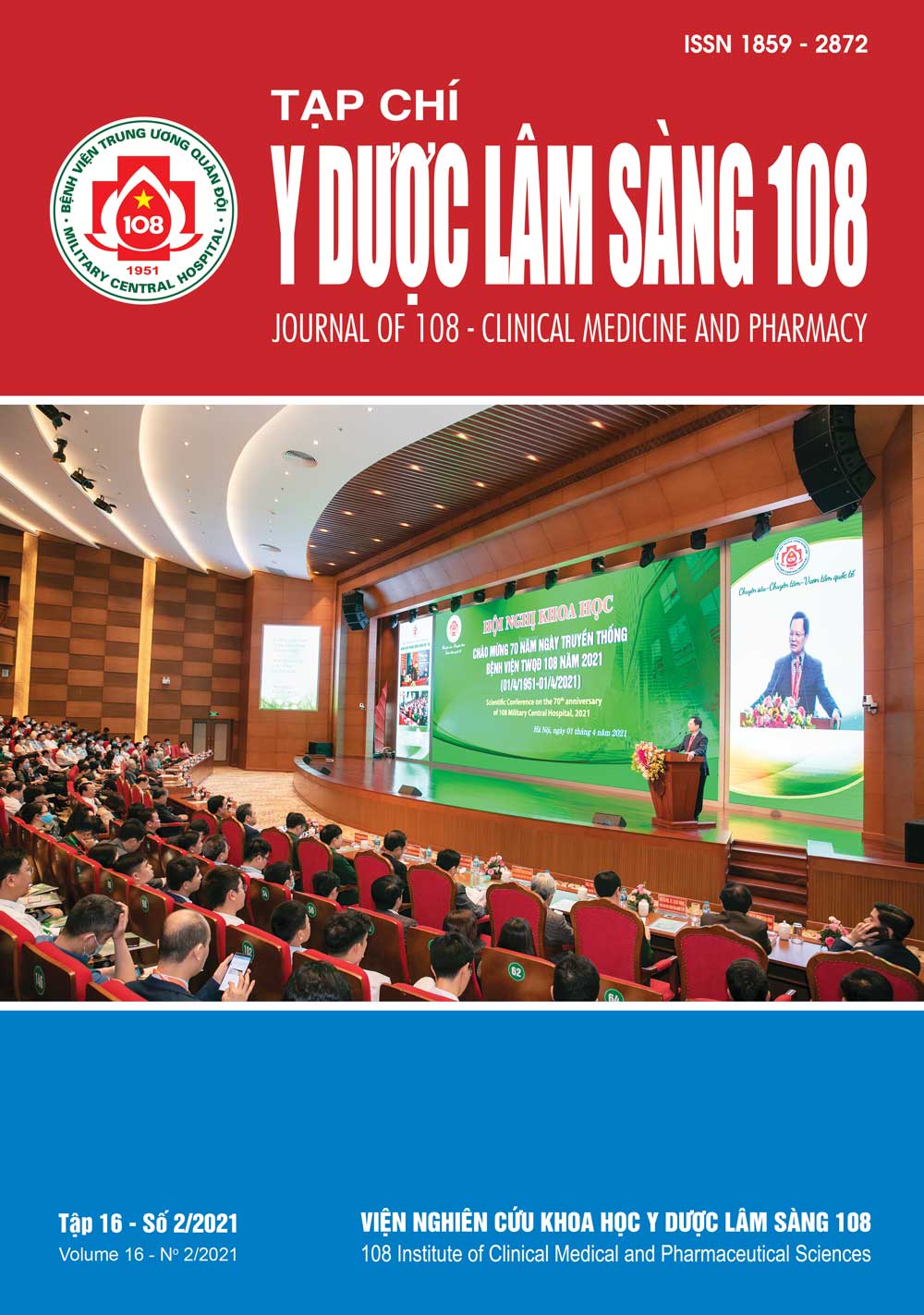Bacteriological characteristics and the antibiotic therapy in descending necrotizing mediastinitis caused by esophageal perforation on emergency at Viet Duc University Hospital
Main Article Content
Keywords
Abstract
Objective: Aim of this paper is to analyze the isolated bacteriological characteristic and antibiotic therapy. Subject and method: A prospective and retrospective study of cases diagnosed descending necrotizing mediastinitis (DNM) due to perforation of the esophagus had been treated at Viet Duc Hospital from 1/2016 to 3/2019 including the deaths and discharged to die. The diagnosis of DNM was based on Estrera (1983) criterias. Result: A total of 40 cases, the ratio of male: female was 4.7:1, Age from 36 and 60 years old accounted for 60%. Esophageal perforation caused injury 70%, pathologies 30%; Bone caused 88.5% on injured cases. Perforation was located in 1/3 upper part 57.5%, 1/3 middle part 22.5% and 1/3 lower part 20%. Type I was 55%, and type IIb accounted for 45%, however, no type IIa was observed. Bacteriology isolation: 24/40 (60%) isolated were bacteria and fungi, 100% combines both anaerobic and aerobic, in which Gram (+) aerobic predominantly 75.9%, commonly were Streptococcus species in 37.5%, Enterococcus faecalis in 20.8%, Acinetobacter Baumanii 20.8%. Gram (-) aerobic accounted for 17.2%, commonly are Klebsiella pneumonie 12.5%, Pseudomonas aeruginosa 12%, Gram (+) anaerobic: Peptostreptococcus accounted for 8.3%, fungi was isolated in 6/24: 25%. Antibiotics: Cephalosporin (3rd generation) and carbapenem match antibiotic results, 100% combination with metronidazole. Outcomes: Postoperative complications were 7 cases (17.5%). Mortality was 3 cases due to bleeding and multiple organ failure, accounted for 7.5%. Conclusion: Research shows that aerobic and anaerobic combined bacteria account for 100%, aerobic Gram (+) predominance of which Streptococcus species, Gram (-) are common Klebsiella pneumoniae and Pseudomonas aeruginosa; anaerobic Gram (+) single Peptostreptococcus. Antibiotic used by experience are broad spectrum and strong such as cephalosporin (3nd generation) and carbapenem, which is suitable with results of antibiogram, and combined metronidazole.
Article Details
References
2. Nguyen Duc Chinh, Tran Tuan Anh, Pham Vu Hung, Pham Gia Anh, Philipp Omar Hannah, Tran Dinh Tho (2017) Experience on diagnosis of descending necrotizing mediastinitis at Viet Duc Hospital. The Thai Journal of Surgery 38.
3. Amudhan A, Rajendran S, Raj VV, Rajarathinam G, Jyotibasu D, Ravichandran P, Jeswanth S. et al (2009) Management of esophageal perforation: Experience from a tertiary center in India. Dig Surg 26(4): 322-328.
4. Endo S, Murayama F, Hasegawa T, Yamamoto S, Yamagychi T, Sohara Y et al (1999) Guideline of surgical management based on diffusionof descending necrotizing mediastinitis. Jpn J Thorac Cardiovasc Surg 47: 14-19.
5. Estrera AS, Lanay MJ, Grisham JM et al (1983) Descending necrotizing mediastinitis. Surg Gynecol Obstet 157: 545-552.
6. Weaver E, Nguyen X, Brooks MA (2010) Descending Necrotising Mediastinitis: Two case reports and review of the literature. Eur.Respir. Rev 19 (116): 141-149.
7. Ethuin F, Marie O, Jacob L (1998) Médiastinites en dehors de la chirurgie cardiaque. Conférences d'actualisation: 541-550.
8. Kroepil F, Schauer M, Raffel AM, Kröpil P, Eisenberger CF, Knoefel WT (2013), Treatment of Early and Delayed Esophageal Perforation. Indian J Surg 75(6): 469-472.
9. Gupta NM, Kaman L (2004) Personal management of 57 consecutive patients with esophageal perforation. Am J Surg 187(1): 58-63. doi: 10.1016/j.amjsurg.2002.11.004.
10. Luis MIC, Fernando ME, José Luiz Jesus de Almeida (2006) Descending mediastinitis. A review, Sao Paulo Med J 124(5): 285-290.
11. Muhammad AP, Harvey R, Adinda BS, Alvin AS, Wuryantoro, Suprayitno W and Dhama SS (2016) Descending necrotizing mediastinitis: Management and controversies. Cardiovascular and Thoracic Open Volume 2: 1-5.
12. Ochi N, Wakabayashi T, Urakami A, Yamatsuji T, Ikemoto N, Nagasaki Y, Nakagawa N, Honda Y, Nakanishi H, Yamane H, Monobe Y, Akisada T, Katayama H, Naomoto Y, Takigawa N (2018) Descending necrotizing mediastinitis in a healthy young adult. Ther Clin Risk Manag 14: 2013-2017.
13. Pearse HE (1938) Mediastinitis following cervical suppuration. Ann Surg 108: 588-611.
14. Sofia A, Edgar BR, Raul P, Jeovanni R et al (2015) Descending necrotizing cervicomediastinitis secondary to esophageal perforation: Management in a hospital with limited resources. Paramerican Journal of Trauma, Critical Care & Emergency Surgery 4(1): 23-29.
15. Diamantis S, Giannakopoulos H, Chou J, Foote J (2011) Descending necrotizing mediastinitis as a complication of odontogenic infection. International Journal of Surgery Case Reports 2(5): 65-69.
16. Ričardas Janilionis, Žymantas Jagelavičius, Pavel Petrik, Gintaras Kiškis, Vytautas Jovaišas, Algis Kybartas, et al (2013) Diffuse descending necrotizing mediastinitis: surgical treatment and outcomes in a single-centre series. ACTA MEDICA LITUANICA 20(3): 117-128.
 ISSN: 1859 - 2872
ISSN: 1859 - 2872
